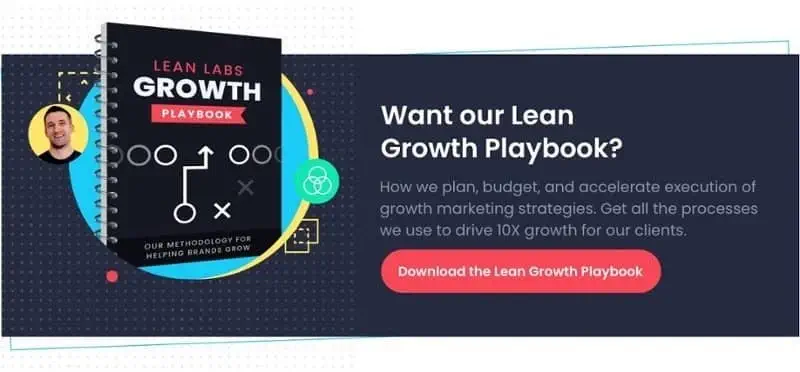Understanding Growth Marketing Agency Pricing in 2020 [Updated for 2021]
November 23, 2021
![Understanding Growth Marketing Agency Pricing in 2020 [Updated for 2021]](https://www.sprocketrocket.co/hubfs/Imported_Blog_Media/growth-marketing-agency-3.jpg)
Understanding Growth Marketing Agency Pricing in 2021
Do you know what the medieval blacksmith and the 2021 growth marketing agency have in common?
Services have always competed on price, at least to a degree. And they always will.
Growth marketing agencies are always coming up with creative ways to price their services. But, at the end of the day, it comes down to the question of results and time. And, for some agencies you don’t want to work with, it boils down to time only.
You would think after hundreds of years, it would be more than that. But, it really isn't.
The issue is, most marketing agencies have gotten really good at hiding the fact that they are charging hourly rates.
The really good marketing agencies have figured out the two-pronged formula of results plus time. And, these agencies are the ones who have successfully escaped the hourly quagmire.
Which one is the best fit for your business? That’s what we’re going to try and figure out in this post.
How Much Does a Growth Marketing Agency Cost?
What does Lean Labs charge?
We’ll get to that in a minute.
Before we talk about agency pricing models, and the pros and cons of such, we need to make one thing clear. The agency that will get you the best results is going to cost more than the agency that is just going to take your money and waste your time.
Cheap agencies are cheap for a reason. That’s a key to remember.
If you think an agency is charging too much, consider how much bad marketing will cost.
Right?
Don’t Hire a Marketing Agency on Price
I challenge you to think about growth agency pricing in a different way -- a better way: Instead of comparing hourly rates, compare the cost of results.
What does that mean?
If you paid an agency $150 an hour, and they drove a $200 return for each hour investment, that’s pretty good. And, a lot of people would be happy with that ROI.
However, if you could pay a different agency $500 an hour, and they would bring you a $2,000 return for every hour spent, which one would you rather hire?
Do the math:
By the time you pay the first agency $1,000.00 in fees or retainer, you would have made $1,332.00.
By the time you pay the more expensive agency $1,000.00 in fees or retainer, you would have made $4,000.00.
Just because the second agency charged more than 3X what the first agency charged, the results more than pay for the difference.
Good marketing always pays for itself.
Hourly Pricing
Some agencies, and a lot of freelancers, charge an hourly fee. If you want them to redesign your website, their quote will come with an hourly rate. This is different than the fixed pricing model because any scope changes go straight to the client’s checkbook.
This kind of engagement is easy to manage for the agency, and sometimes a pain for the client. Because if someone isn’t done right, or if something underperforms, the pain isn’t felt by the agency because they keep billing the client for the extra work.
Hourly relationships are generally the model of smaller agencies or freelancers.
Fixed Pricing
Fixed pricing is what some smaller agencies have adopted. They will give you a bid for a website project or marketing proposal. They will do the work for a set amount.
This is usually an easy project for the agency, and a mixed bag for the client. Because the scope and expectations have to be managed to keep scope creep at bay.
If there are any changes or additions, you have to stop and agree to the final price (and the final deliverables) before continuing. And, if the end result doesn’t meet expectations, it’s often an argument over the original quote vs. all the changes that were requested during the project.
Hourly Plus
A lot of midsize to large marketing agencies have adopted this kind of pricing model. It can take a bunch of different flavors, but the end result is the same.
In this instance, hours are transformed into some form of spendable currency - like “points.”
A website project is estimated to take X hours to finish, so the price of that project is translated into X amount of points. Usually, 1 for 1 - one hour equals one point.
The beauty of this model is that it’s a lot more flexible without a bunch of revisions or conflicts over scope creep. For example, in the middle of the project, if the client wants to add a page to the website that wasn’t discussed earlier, no worries, we can just apply points to build that page.
In many cases, points are used as an ongoing retainer. Every month, for $X, the client gets X points. And, they can spend them on whatever they need or want. And, if there are not enough points to complete the work in the current month, you can easily borrow points from the next month, or purchase a bunch of points, etc.
The positive side to points vs. hours is that, if an agency tells you a new web page will cost, say, 15 points; and if that page isn’t completed in 15 hours, the agency assumes the cost and risk of going over-budget.
That’s why clients like this so much. The agency has to deliver the 15 points worth of work regardless of whether or not it took 15 or 20 hours to complete.
Value-Added Pricing
A lot of agencies use value-added pricing to assume some of the risk of the project, and therefore, some of the reward as well.
Where an agency may normally charge you $500 an hour for their services, they may discount that down to $200 per hour, with a value-added bonus attached.
It usually goes something like this: We’ll do it for $200 an hour, and 10% of the revenue directly attributed to our actions.
Some people balk at that because percentages sound scary.
But, the truth is, value-added pricing is based solely on delivering revenue. It’s performance-based pricing, and like in the previous example, it usually equates to a much higher ROI than any of the other pricing models.
How Does Lean Labs Price Their Services?
Yes.
That’s the answer.
Now that you’re done rolling your eyes, let me explain.
We work with businesses of all different sizes and budgets. We work with massive enterprises, and we work with early-stage startups.
And here’s the kicker, we price differently for those businesses.
We don’t do cookie-cutter. We decide which model best fits what your company actually needs right now.
If you’re an early-stage startup, more than likely, you aren’t going to be driving enough revenue to make value-added pricing a thing out of the gate. With your marketing budget, fixed pricing or Hourly Plus might be the right way to do business.
Why would we fight that, ever?
It would be stupid.
That’s why we don’t do proposals. We do blueprints.
We talk to our prospective clients, and spend the time to find out exactly what you need. We don’t just send you a cookie-cutter proposal with a bunch of guesses based on hours vs. time.
Instead, we dive in from the very first exploratory call. We’re always searching for the way we can provide the most value, and drive real, meaningful growth. And then, we work with your budget to accomplish that goal.
We’ve worked with people on small budgets, and grew them so fast they increased their spend with us. In some cases, hourly plus became value-added. It always depends on the stage of growth, the growth blockers, and the potential for delivering meaningful growth.
That’s why we tell anyone who is considering working with us, to just jump on the phone. Let’s talk about it, and if we don’t see a way to deliver growth, we won’t offer to work with you. It’s that simple.
If you want to talk about meaningful growth, and the pricing to achieve that, talk to us.


Comments